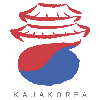Korean Lessons ᚛ Level 1 - My First Steps in Korean (Lessons 1 to 30) ᚛ Lesson 17 - The Present Tense in the Formal Style [-(스)ㅂ니다]
The Present Tense in the Formal Style [-(스)ㅂ니다]
In the previous chapters, we have seen how to conjugate present tense verbs in both casual and polite styles as well as vowel contractions and the many conjugation exceptions. Conjugating verbs in the present tense in the formal style in Korean is much easier than conjugating them in the other politeness levels. Indeed, the formal style has very few exceptions.
The Present Tense in the Formal Style - Normal Case
Korean verbs are conjugated in the formal style as follows:
- If the stem of the verb ends in a vowel: [Stem]ㅂ니다
- If the stem of the verb ends in a consonant: [Stem]습니다
Note: According to Korean nasalization rules, when ㅂ is just before ㄴ, it is pronounced ㅁ. This means that the forms in ㅂ니다 and 습니다 are pronounced respectively [ㅁ니다] and [슴니다].
The verb 가다 (= to go) has a stem 가 which ends in the vowel ㅏ, so we add ㅂ니다 to the stem.
- 가다 → 갑니다. = I go. / You go. / He goes… etc.
The verb 덥다 (= to be hot) has a stem 덥 which ends in the consonant ㅂ, so we add 습니다 to the stem.
- 덥다 → 덥습니다. = It is hot.
The Present Tense in the Formal Style - Exception in ㄹ
Be careful, if the stem of the verb ends in ㄹ, then the construction of the present in the formal style is done as follows:
Remove the final ㄹ from the stem then add ㅂ니다.
The verb 살다 (= to live) has a stem 살 which ends in ㄹ. We first remove the final ㄹ, so we get 사. Then, we add ㅂ니다 to the stem.
- 살다 → 삽니다. = I live. / You live. / He lives… etc.
Summary table of structure
Learn more
Exercises
Learn more
This printable eBook teaches you Korean writing and includes more than 1,000 Korean vocabulary words divided into 40 categories. Each word comes with audio pronunciation recorded by native Korean speakers (no AI)!
On top of that, you’ll also get access to an online vocabulary learning tool based on the scientifically proven Leitner spaced repetition method.
Learn more

